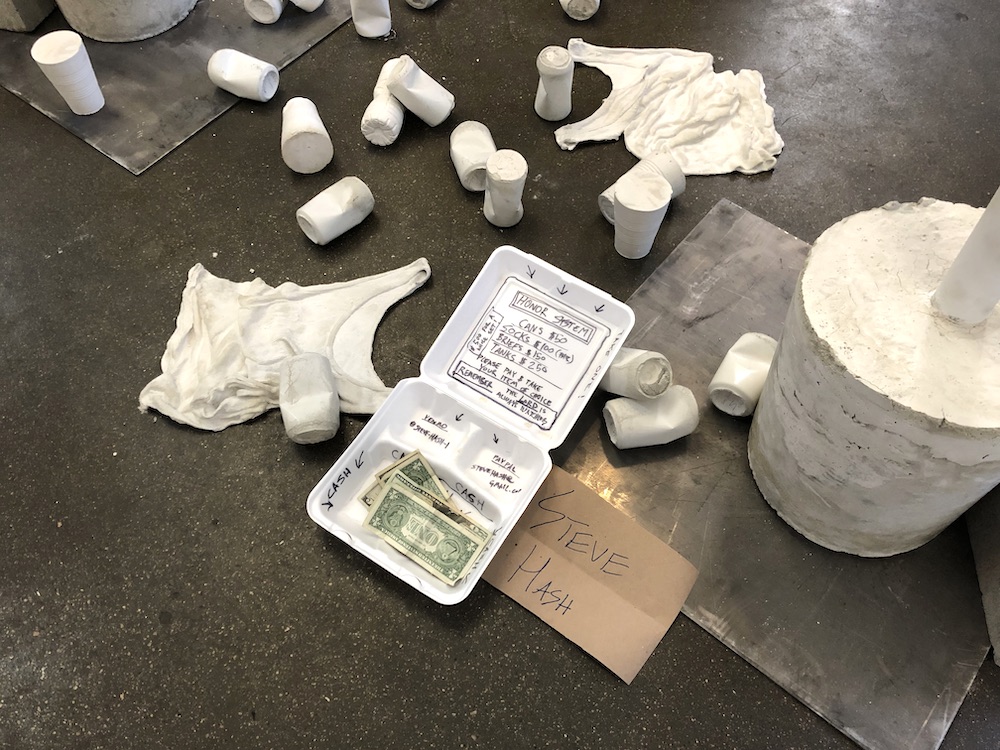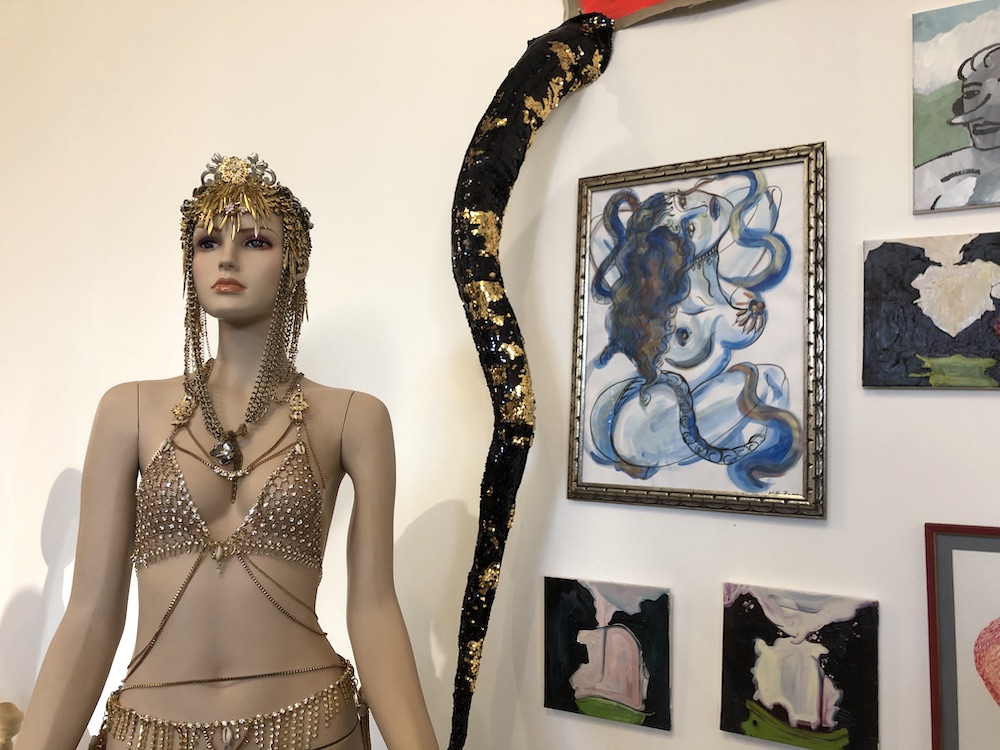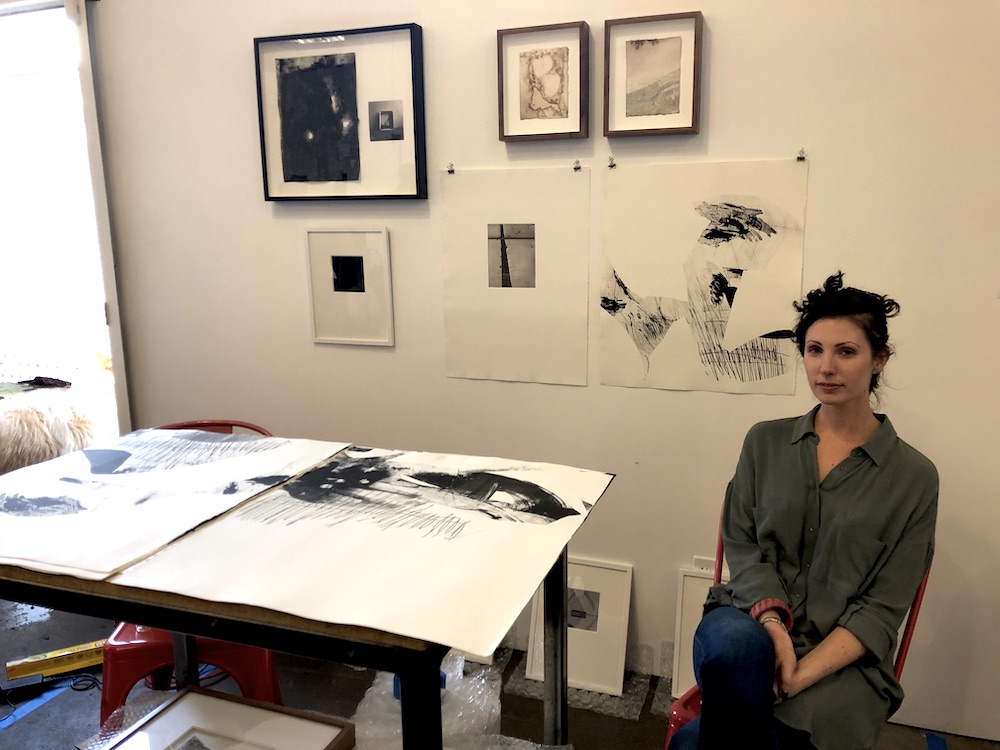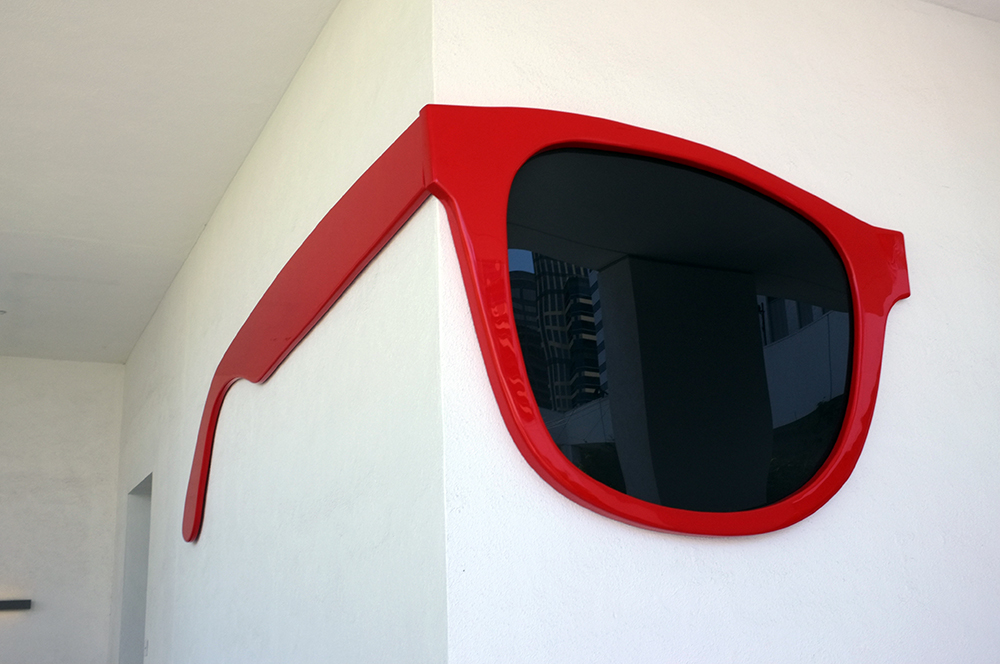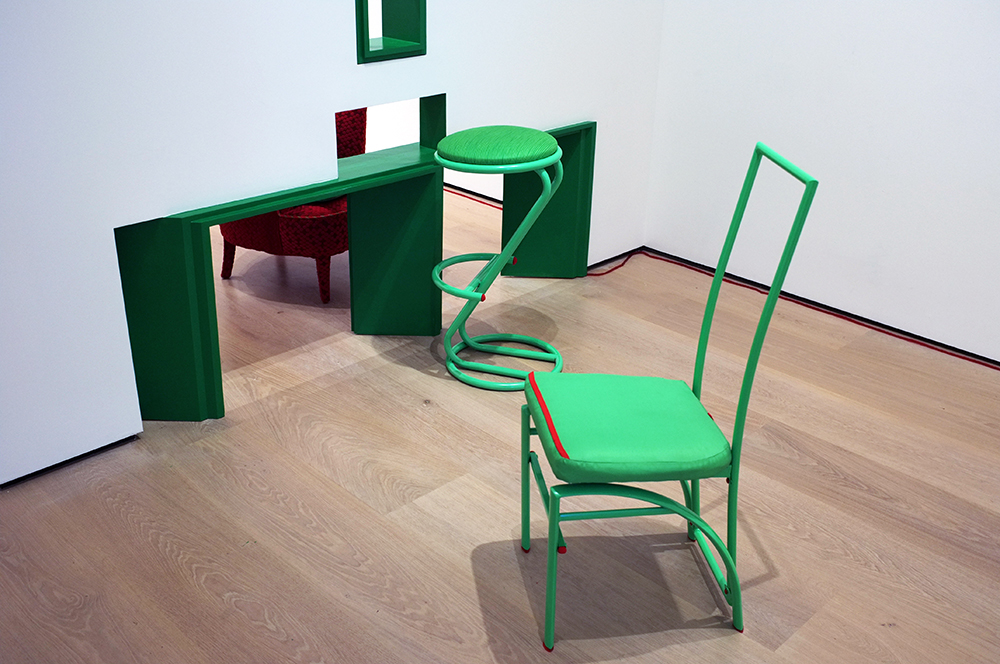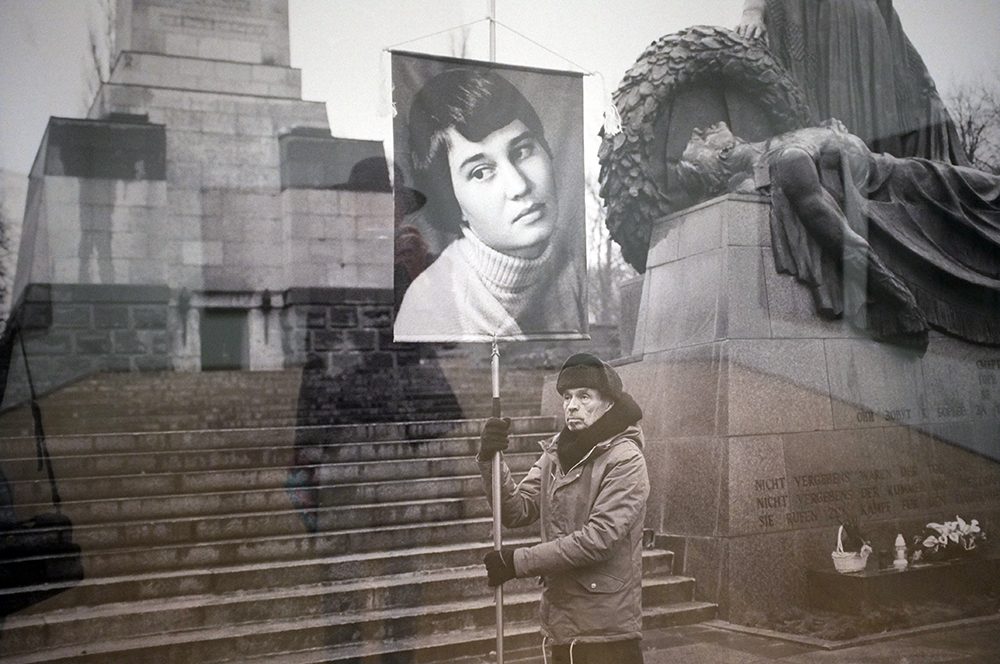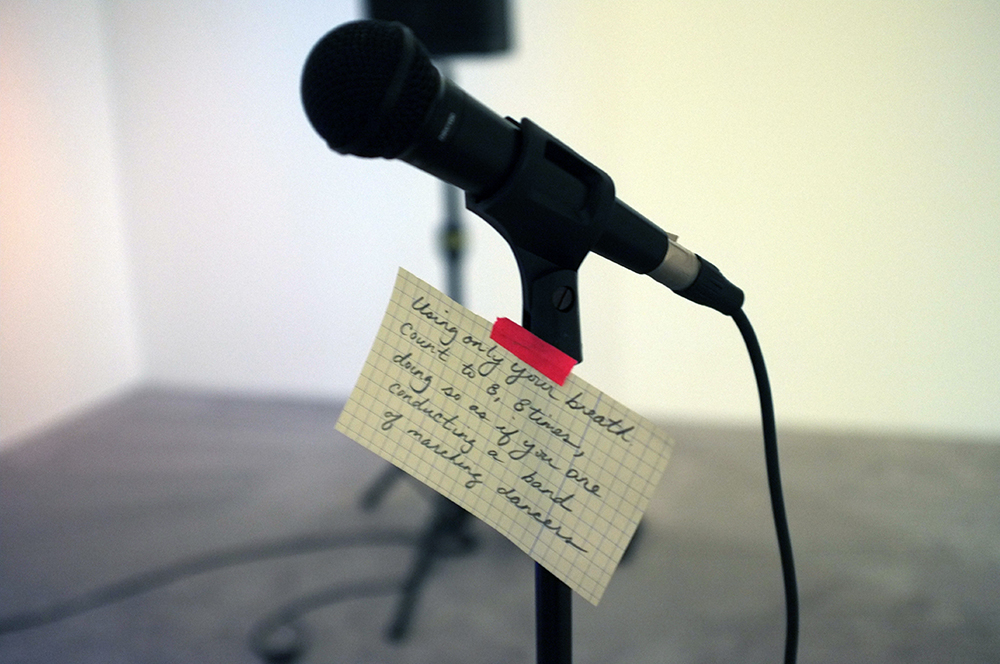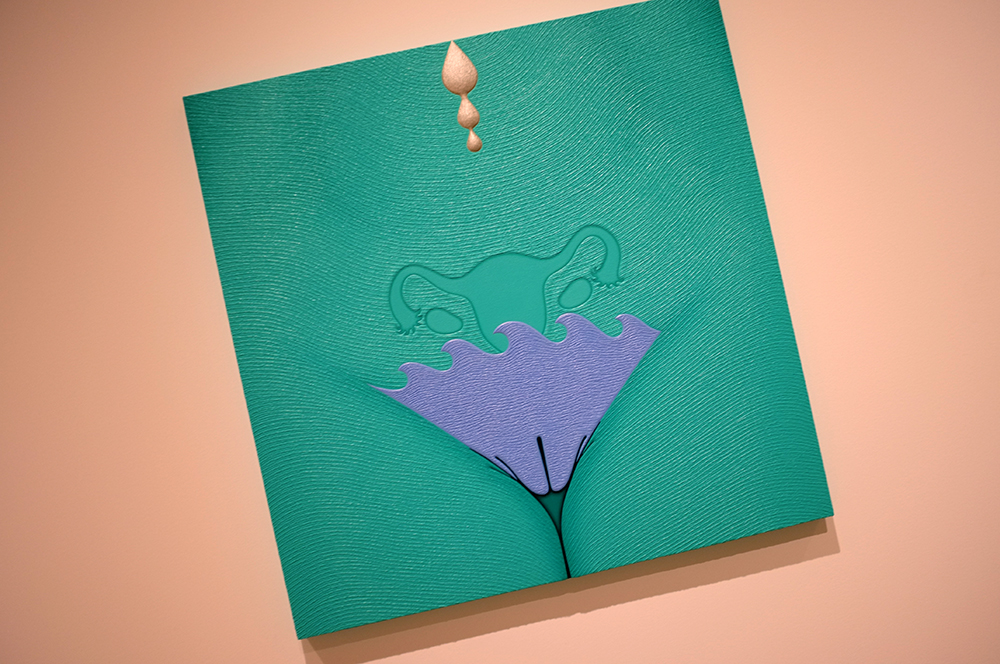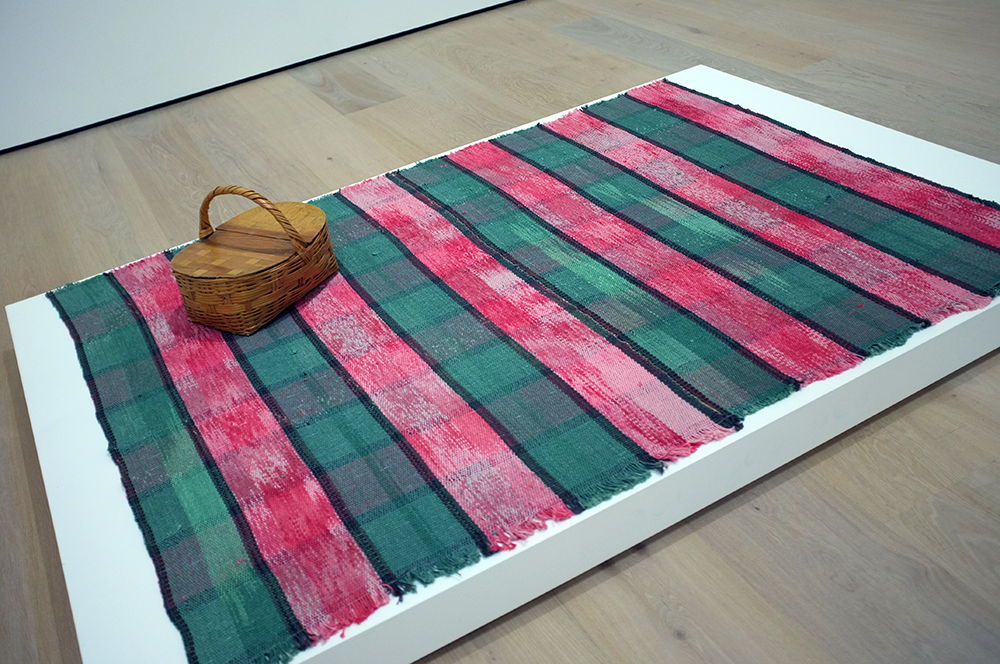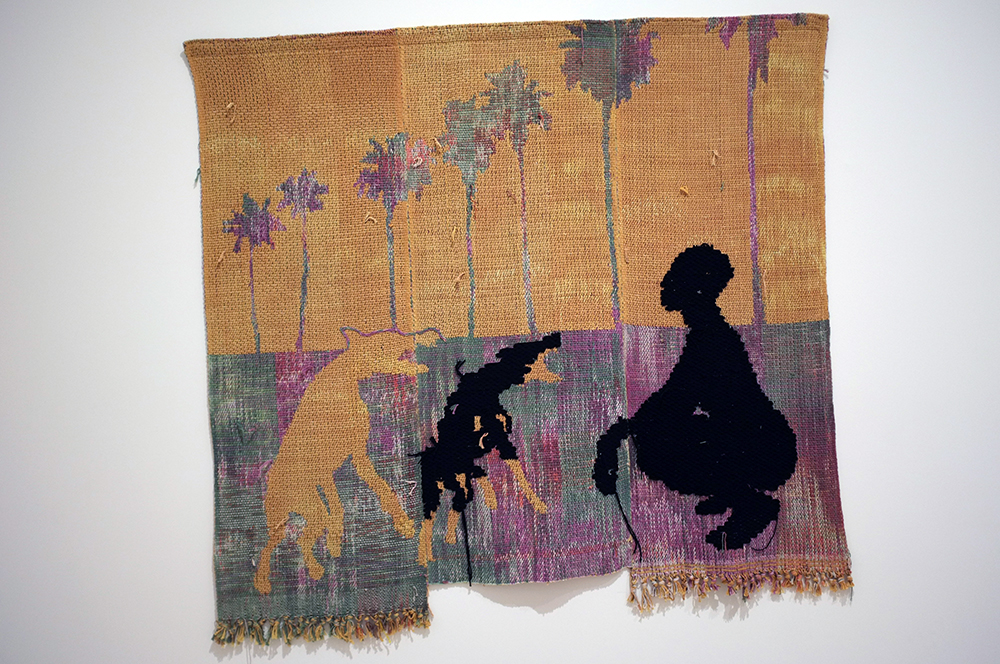Lauren Halsey’s three-room exhibition at London’s Serpentine South Gallery showcases miniature worlds within her world of South Central Los Angeles. The rooms are entry points into Halsey’s equally youthful and sharp mind, demonstrating, in material excess, what should never be lost from a neighborhood vulnerable to gentrification.
Text and photos by Maisie McDermid
LA-based artist Lauren Halsey installs a South Central Los Angeles universe within Kensington Gardens at South Serpentine Gallery. She advances the essence of one of her greatest passions, architecture, by constructing the central ideas of her first UK solo exhibition: funk fantasy, South Central backyard culture, maximalism, and technicolor transcendence. From the books about funk stacked onto clouds to the palm branches standing in spray-painted neon pots, emajendat is a garden of dreams, literally.
Her characteristic power of materializing systematic issues confronting people of color, queer populations, and the working class is ever present in this space. Having only recently completed her MET roof garden commission in October 2023, the eastside of south central los angeles hieroglyph prototype architecture (I), and her 60th Venice Biennale exhibition, keepers of the krown, in 2024, Halsey brings commendable energy to three rooms in London.
The first room, tiled with animal-print carpets and enclosed with galaxy wallpaper, feels like a psychedelic living room. At the center of the room, a rainbow joins two of emajendat’s most iconic objects, “funk mounds” (hardened white clouds scattered throughout all rooms). Just below the clouds, a carpet depicts five children praying. Cut-outs of Egyptian pyramids lined with sparkles stick to the walls, hinting at Halsey’s fascination with ancient Egyptian architecture in a contemporary context. Curiously, the only prominent object left unpainted in the exhibition exists in this first room: a luxurious modern house with Black figures holding each other and swaying on the roof.
Halsey’s interest in objects as symbols is loud between these three rooms; dime-sized ballerina figures and palm-sized palm trees fill the corners of emajendat. Her mementos from years of collecting speak to visors. Like the symbols within Hieroglyphs, each of Halsey’s mementos means something new when put beside each other in thoughtfully curated scenes. Her collection of items becomes her own language, singular items that, when brought together, add life to the crevices of her imagined universe. The exhibition is far from what may casually be understood as hoarding; it is instead a demonstration of lovingly categorized remembering.
The following room opens the exhibition view to Kensington Gardens, much gloomier behind colorfully tinted windows. A monitor projects a video of two South Central locals dancing on a loop, prompting one to wonder why Halsey refrains from including sound in any of the rooms. The rhythm and tunes seem to instead vibrate through the many cut-out photographs of legendary Black singers and dancers joining together on the floor-to-ceiling photomontage. Halsey’s collages are where her artistic mastery radiates. She bridges time and space by positioning an Egyptian pharaoh beside a group of Black men from the 80’s and a line of kids hand-in-hand before ancient pyramids.
Palm trees made out of mirrors stand before this lively wall, reflecting the layered photos. But one differs from the others. The tallest tree model in the room commemorates several Black women who were murdered by a serial killer in South Central in the early 2000s. Their photographs appear on the branches and trunk, reminding visitors of their collective story, while a mirror at the base reflects both the women in the palm tree and the faces on the collage wall behind them.
The windy, silver path through purple mounds of sand eventually ends at the opening of the third and final scene. CDs overlap in rows on the four walls like fish scales, and the glass flooring exposes items below: photos of friends, three-dimensional clouds, local high school graduate certificates, and more and more and more. The contents of Halsey’s mind wrap visitors above, below, and all around. There is even a carved-out seat within one of the rainbow, spray-painted mounds where one can look and wonder about the central figure in the room.
A life-size figurine of a young Black girl dressed in all the animal patterns and neon tints shown in the first two rooms crouches over a circle of concrete with a pencil in hand. She holds a focused face similar to the faces of children praying on a carpet in the first room. Only, rather than praying, she is creating. The statement piece centers Halsey’s themes taped, layered, and squeezed into the three connecting rooms. This is an exhibition about desperately creating to preserve. It is about making what is old new again, “remixing,” as Halsey would put it.
Halsey’s strength is in channeling a young mind at play with her neighborhood’s confrontation with gentrification. Visitors feel her presence in the rooms, envisioning her seated before the collage wall with piles of cut-outs beside her, making thousands of decisions on placement. To imagine all items within emajendat standing in a line before a white wall shows just how much Halsey creates by picking up a cut-out book on funk and taping paper hands in prayer at its book seam.
Lauren Halsey’s emajendat will be open from 11 October 2024 - 23 February 2025 at Serpentine South Gallery. Free entry.











